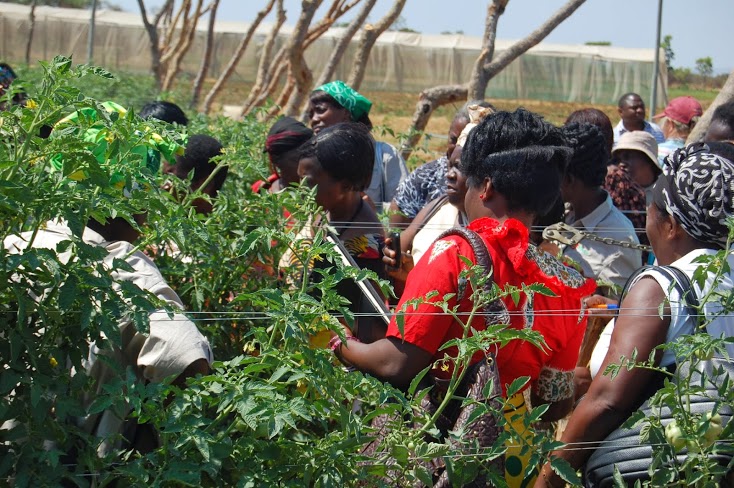[Original post at invisiblefarmers.com]
Giraffe sitings on safari in Zambia, one of the many different ‘realities’ present. Photo by Erin Schneider
I am definitely not in Kansas and most definitely giraffes don’t graze on my farm in La Valle, WI. Nevertheless, I was struck by the ‘wisdom of contrasts and constants’ during my 7 day sojourn to the other side of the world in the hopes of shifting the story of food scarcity, prevalent in so much of the world, to one of security and sustainable abundance.
While crocodile sightings on the lakeshores dampened my enthusiasm for swimming, my spirits were lifted. I had the privilege and honor to participate as one of two U.S. Delegates for the International Day of Rural Women (IDRW) event, representing Farmers Union and serving on the World Farmer Organization’s Women’s Committee. The event was held in Lusaka, and hosted by the World Farmers Organization (WFO), in collaboration with Zambia National Farmers Union, to celebrate IDRW and to address the challenges that women farmers face, and seek solutions.
In the achievement of global food security the WFI recognizes the pivotal role of women farmers, and thus the creation of a Women’s Committee – currently the only formal Standing Committee of WFO that helps advise on policy. Our work calls for concrete action to be taken in terms of political and financial commitments that address the need for gender equality and supporting women farmers to help achieve global food security.
Twelve women (two from each continent except Antarctica) sit on the Women’s Committee, representing their respective farm organizations. At the farm level, we represented dairy, livestock, grains, field crops, beekeeping, fruits and vegetables serving direct, wholesale and commodity markets. We also represented the sustainability spectrum, engaging in IPM, conservation farming, rotational grazing, and agroforestry. All held a passion and dedication for the work (ie the farmer gene), and all acknowledged that despite well-intentioned policies for women farmers, few play out in practice. We know we have our work cut out for us and that the way forward is to organize, share stories, and seek solutions regardless of where we sit on the agricultural value chain. The aim of the committee is to improve the position of women in agriculture and in particular ensure equal treatment between women and men in the agricultural sector in terms of the economic, working and social conditions. And so we set out to learn together, from ZNFU, and other women farmers in the world, who was present for the Zambia IDRW.
Inspired by both peer to peer learning in partnership with experts. Opening remarks during Women’s Forum during Int’l Day of Rural Women’s Gathering, Lusaka Zambia. Photo by Erin Schneider, WFO Women’s Committee Member
Inspired by both peer to peer learning in partnership with experts. Opening remarks during Women’s Forum during Int’l Day of Rural Women’s Gathering, Lusaka Zambia. Photo by Erin Schneider, WFO Women’s Committee Member
During the IDRW event, speaker highlights included, Ms. Trivedi, with the Self employed Women’s Association of India, sharing how SEWA has helped organize, and ensure the employment security, training and education of nearly a million women farmers and rural women. Ms. Jalloh, Deputy Minister of Agriculture in Sierra Leone highlighted how they were trying to rebuild the farm sector after years of Civil War and setting up agriculture marketing hubs for women farmers gain a better market share and minimize exploitation from brokers. (The model reminded me of the Wisconsin Food Hub Co-op that WFU has helped launch). Zambian organic fruit grower Ms Erikkson, owner of Chankwakwa Natural Foods, offered a model for scaling up with value added fruit products (mangoes and guava), powered entirely by solar energy. Mr. Gad, CEO of Omega Farms in Ethiopia, shared ways that investor groups can provide better access to small-holder farms (men too, are encouraging and motivating women farmers!). The lineup of inspiring, interesting, and hopeful farmers and speakers continued throughout the day.
Broadly, at the end of the day, we all recognized that the role of women in agriculture is fundamental to achieving food security and nutrition goals. According to Food and Agriculture Organization (FAO) estimates, women are responsible for more than 50% of food production worldwide. This includes up to 80% of food production in African countries, 60% in Asia and 35% in South America. For fruits and vegetables the average numbers are higher with 70% of production done by women on an average of 2 acres or less of land. In the U.S., the story is similar. According to the U.S. Department of Agriculture, the number of ranches and farms operated by women doubled in the last 30 years, with thirty percent (1 million) women farmers recognized as primary operators. A 2013 USDA report found that many of these women are electing small-scale, sustainable methods of farming, especially when getting started. Half specialize in grazing livestock and raising poultry, with others growing diversified crops. Many diversify their farms through on-farm education, events, and process and learn in community.
Gathering at Ms. Sianga’s Farm for a tour, discussion of different horticultural techniques. Photo by Kati Partanen, WFO Women’s Committee
Gathering at Ms. Sianga’s Farm for a tour, discussion of different horticultural techniques. Photo by Kati Partanen, WFO Women’s Committee
We were able to breakaway from Lusaksa city life for farm visits the following day. Some delegates visited women-run farms, others toured a coffee farm (Zambian coffee is surprisingly good), and I ended up touring commercial potato, dairy, poultry, and tobacco farms – what a contrast from my CSA realities in Wisconsin! I was struck by the vastness and diversity of Zambian agriculture and impressed that ZNFU has been around for 108 years. Somehow ZNFU has found a way to work with diverse stakeholder groups with potentially conflicting interests and I was curious to see what what I might learn from a tobacco farmer.
My visits to the three different, commercial scale farming operations reminded me that you can learn from everyone. These operations were all run by men yet all of the field labor I observed during our visit was done by women. This is not to say that men farm only at a commercial scale and can all obtain credit with ease, nor do all men abstain from laboring in the fields. I did observe however that, of the 50 plus attendees on this particular visit, five were women farmers. The agricultural scales are often tipped toward one end of the spectrum to the other and the gender and wealth divide is clearly visible. I still gleaned some invaluable tips from the farm owners on accounting for cash flow and ways to provide health care to farm workers. More importantly, I clearly saw the need to build bridges as I bore witness to four realities and contrasts of agriculture and Zambian life – village, town, city, and safari. I think this is not so different than the realities of agriculture we face here in the Midwest/U.S. The questions and contrasts of scale, land access/tenure, making visible some of the structures and inequalities at play and how we shift the story of insecurity and scarcity thinking to one of re-imagining our farms and food systems toward a long-lasting model of sustainable abundance. This was evident throughout the IDRW gathering. When women were given a space to gather, to ask questions, state needs and goals, stories shift, networks strengthen, and support builds. I was inspired by how articulate and passionate women were about their farm and farming needs. Broadly, by the end of our time in Zambia and based on what we heard that women needed, we had the start of a project to support – example here, we have the shaping of a formal policy statement for our work to adopt at the General Assembly meeting coming up in March, that you can learn from contrasting viewpoints and we need to create spaces for farmers to gather and share/address challenges and opportunities in partnership with experts.
Whether in Lusaka, Zambia or La Valle, Wisconsin we need to support women farmers in gaining better access to assets, inputs, and services such as land, credit, and training. It is clear that once we find each other, women farmers of the world are taking the lead in addressing these challenges and advocating on behalf of the global community of farmers.
Well, so what and now what?
What I am learning is that through listening and sharing stories, engaging in dialogue sharing knowledge and exchanging ideas with both farmer peers and experts, we’re able to adopt country- and global-level initiatives that improve the position of women farmers.
I need your insights to surf the next wave. I invite you to share your ideas, on what might we do to celebrate 2014 International Year of Family Farming? By commenting you’re not committing yourself to organizing an activity, we’re just interested in hearing your ideas. As a result, we hope to have a sense of what we can do individually, locally, nationally, and globally farmers union organization to bring to the center stories and innovations from farmers often left at the margins.
Regardless, it is my hope that you will be able to help share the importance of growing food and long-lasting relationships wherever you are in the world. To listen to both your heart and head, and each other no matter where you sit on the agricultural value chain, and let this wisdom of contrast and constants help guide you to not just what you do, but how you want to be in the world. For me, ultimately, I want to be happy, make an honest living with dignity and doing what I love. And I love fruit, I love to farm, and I’d love to hear and learn from you.
The way forward is encouraging and I have no doubt that we will find a way to learn, and support each other in turning practices into policies, policies into practice. Now if only I could graze giraffes in our prairie provided they don’t mess with our currants.
Erin Schneider farms, facilitates, and loves fruit. She in partnership with her husband Rob McClure co-own and steward Hilltop Community Farm a small-scale diverse CSA and orchard operation in La Valle, WI specializing in agroforestry and unique varieties of Midwest fruits. She recently has been invited to serve on the WFO Women’s Committee and has supported farmer to farmer learning exchanges in Senegal, Nicaragua, and on her farm in Wisconsin. Erin is a member with Wisconsin Farmers Union and a graduate of the National Farmers Union Beginning Farmer Institute.
Women farm laborers harvesting onion, during a visit of a commercial farm in Zambia. Over 70% of global vegetable production in Africa is done by hand by women. Photo by Erin Schneider
Women farm laborers harvesting onion, during a visit of a commercial farm in Zambia. Over 70% of global vegetable production in Africa is done by hand by women. Photo by Erin Schneider
For Information about the World Farmers Organization and highlights/links to the IDRW presentations, visit the WFO website.
For more information on ways Farmers Union supports women through their programs and events visit National Farmers Union website: www.nfu.org
More photos from my trip:










